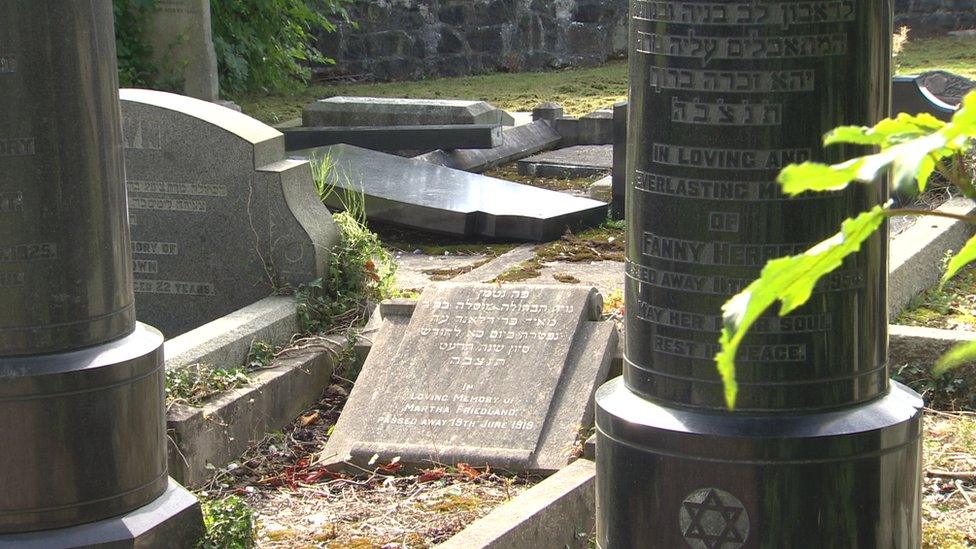City Cemetery to undergo restoration with £1.68m grant
- Published
Hidden heritage of Belfast City Cemetery set to be uncovered
Belfast City Cemetery is to be restored to former glory after the award of a £1.68m lottery grant.
The Heritage Lottery Fund cash will be used to preserve some of the cemetery's historic features and raise awareness of its heritage.
The central steps and Victorian fountains will be restored, while new signage will be installed to explain the history of the burial ground.
A programme of live events, tours and workshops will also be rolled out.
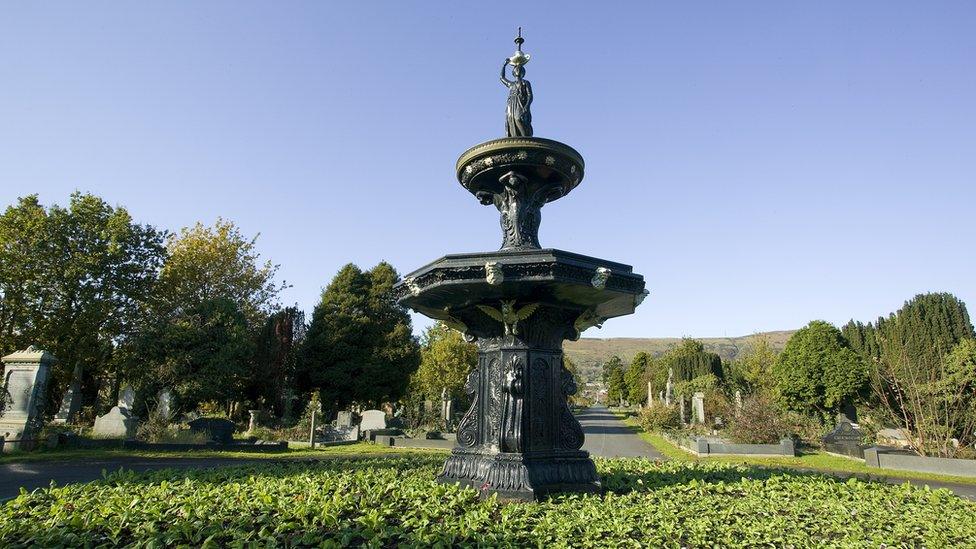
The Victorian fountains in Belfast City Cemetery are to be restored under the plans
As part of the attempts to attract more visitors, shrubs and trees will be planted and a new visitor and education hub will be developed for exhibitions and events.
'Vital connections to our history'
Paul Mullan, the head of the Heritage Lottery Fund in Northern Ireland, described the cemetery as a place of "immense heritage value".
"It was the city's first municipal cemetery, it is the final resting place of many influential figures from the city's past and it is one of the largest green spaces in west Belfast.
"We often think of cemeteries as places for the dead, but our parks and cemeteries provide vital connections to our history, our community and our natural heritage and are also very much for the living. "
The cemetery, at the junction of the Falls and Whiterock Roads in the west of the city, is maintained by Belfast City Council.
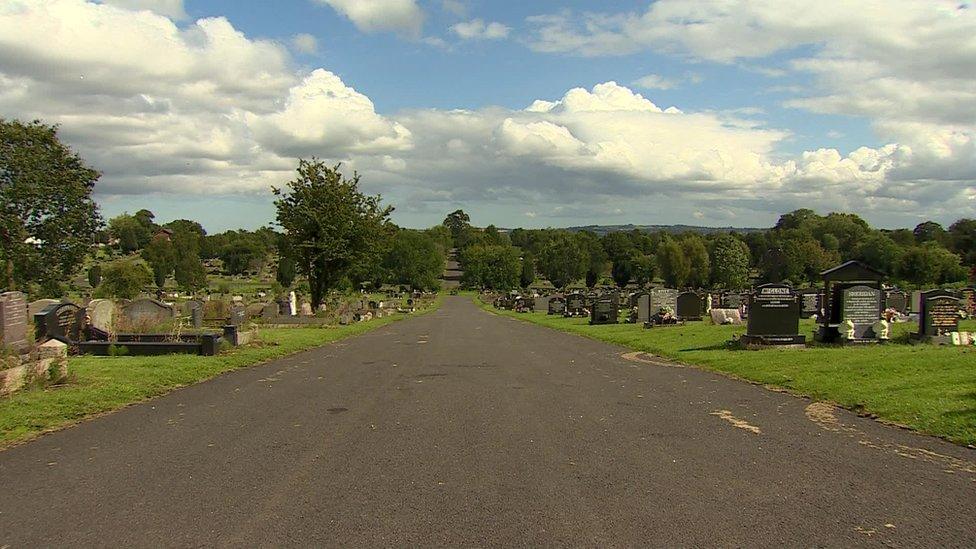
Belfast City Cemetery is to be restored with a £1.68m lottery grant
More than 230,000 people have been buried there since it was opened in 1869.
A host of famous figures from Belfast's past are buried in the cemetery, including Sir Edward Harland, the co-founder of the Harland and Wolff shipbuilding company; Rinty Monaghan, the first Irish boxer to be honoured by the Boxing Hall of Fame; and Margaret Byers, a campaigner for women's education and founder of Victoria College.
'Protected for future generations'
A Jewish cemetery, with separate walls and entrances, dates from 1871, while the Poor Ground area contains the remains of 63,000 people who were buried in unmarked graves.
A hidden underground wall was also constructed to divide Catholic and Protestant graves.
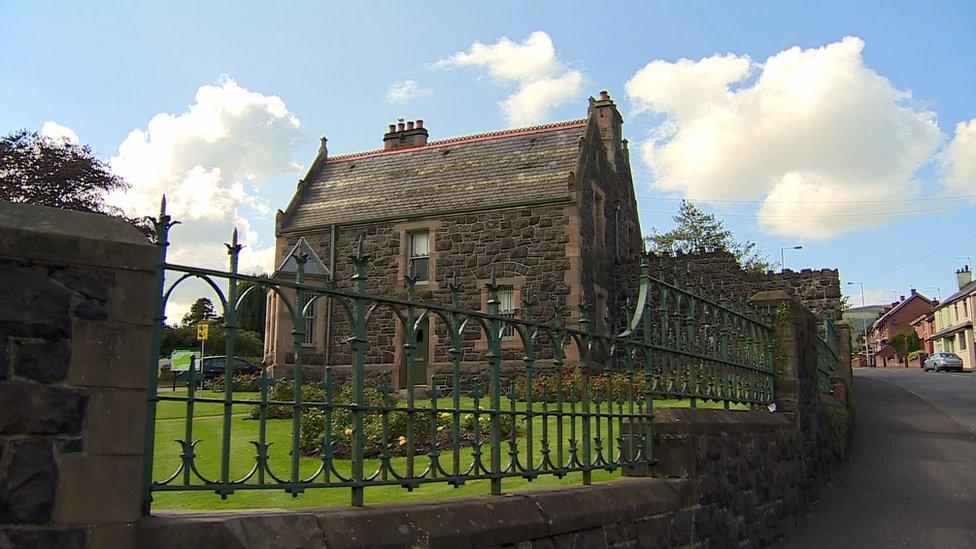
More than 230,000 people have been buried at the cemetery since it opened in 1869
In 2016, 13 Jewish burial spots were vandalised and in recent years graves at the cemetery have been the target of repeated anti-social behaviour and attacks, leading to the installation of CCTV by the council.
Ulster Unionist councillor Jim Rodgers said the funding would "allow us to ensure the unique heritage of this part of the city is protected for future generations".
"By developing the site, we will be opening it up for people to explore and discover more about Belfast's history, which has been something of a hidden gem at City Cemetery. But now, thanks to this money we have the opportunity to create a site that is fit for purpose in the 21st century, and accessible for all, whilst ensuring it is properly preserved."
- Published8 December 2017
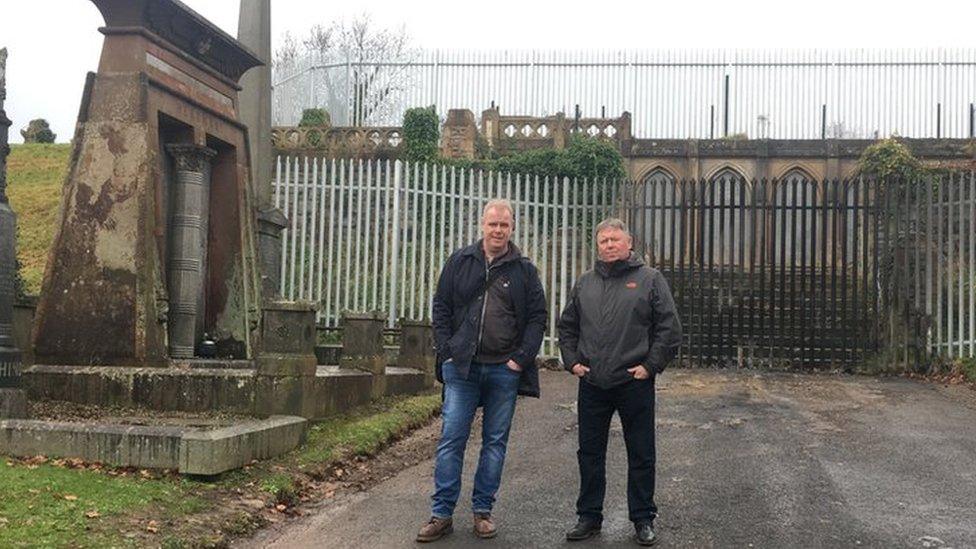
- Published21 August 2017
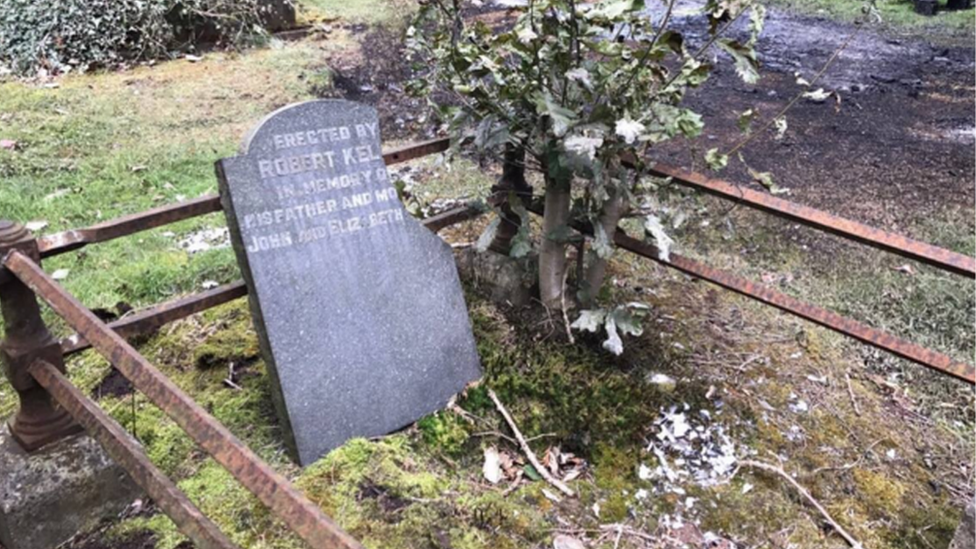
- Published27 August 2016
